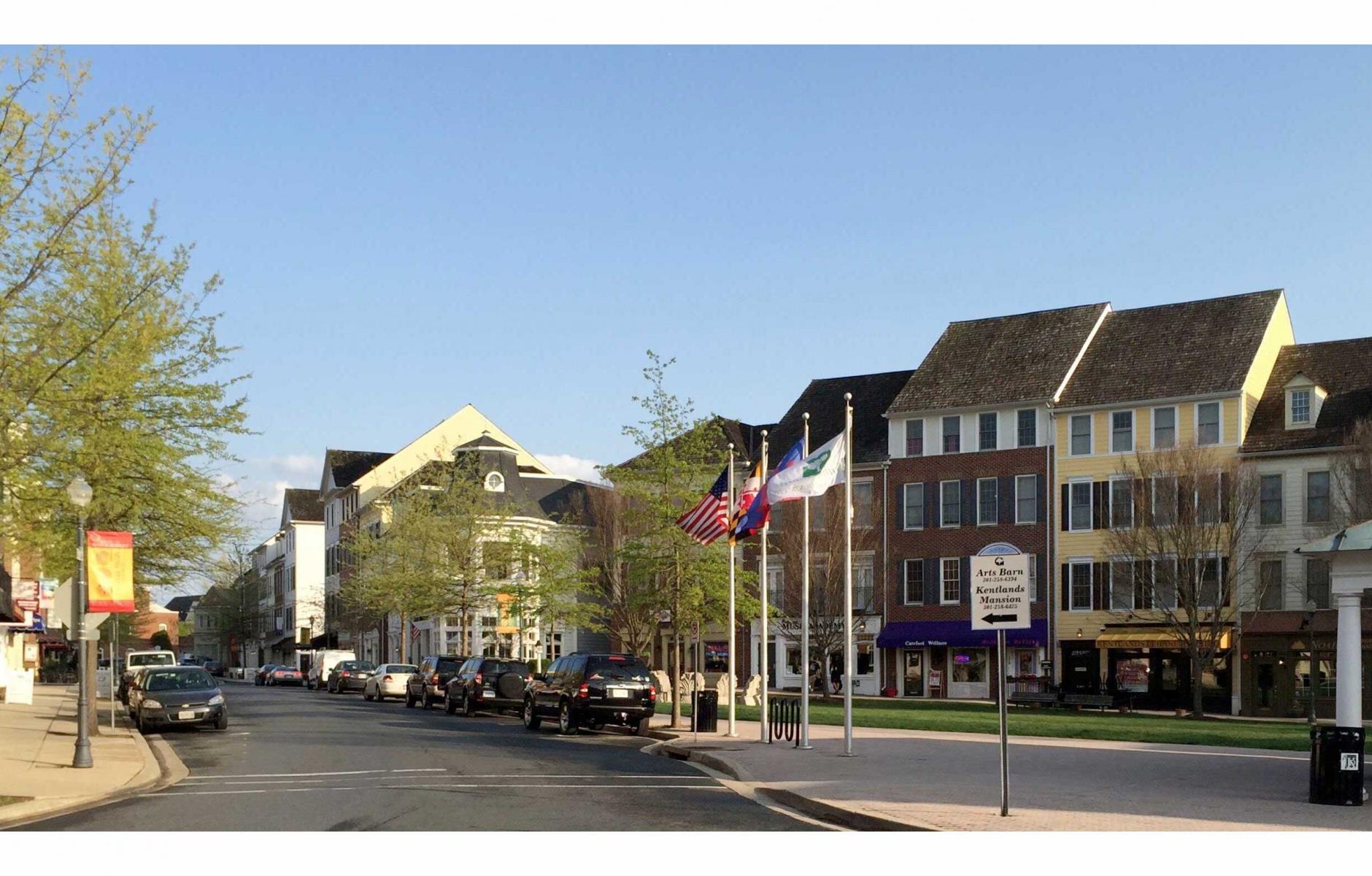
Leaning toward live-work
Note: This article was written as part of the Project for Lean Urbanism and edited for Public Square.
Live-work units are among the oldest forms of housing. For centuries, cities, towns and villages included shophouses—often referred to as the original live-work unit—in which work, commerce and housing all took place on the same property. However, the advent of the industrial revolution, advances in transportation technology, new settlement patterns, and the fact that most zoning codes required separate and single-use zoning all contributed to the slow erosion of this type. By the mid-1950s, live-works essentially became illegal or highly discouraged in most places.
The case for live-works
In the past 30 years, the rise of the internet, telecommuting, and the entrepreneurial spirit of workers across generations have begun to force a reversal of this trend. Many factors are contributing to this renewed demand. Advances in information technology and telecommunication improvements have also made both home-based businesses (HBB) and working from home much more feasible. Commuting has become an unpleasant chore, with the average American spending seven days per year en route to and from work. Finally, our desire for a smaller carbon footprint, reduced transportation costs, greater work flexibility and autonomy, a better quality of life, and less reliance on oil have also fueled the return of the live-work unit.
Strong economic, demographic, and household trends are revealing a tremendous pent-up demand for the use of homes for employment—resulting in a pressuring of the marketplace to accommodate live-work units. A quick glance at US Census data clearly favors this growing market.
• The number of people working from home is steadily increasing, and at a faster rate than expected. The percentage of workers who worked at least one day from home increased from 7 percent in 1997 to 9.5 percent in 2010. The percentage of those who work exclusively from home increased from 4.8 in 1997 to 6.6 in 2010. Extrapolated to now, those figures are more than 10 percent and 7.5 percent, respectively.
• “Small is big” in our economy, as the number of people who would find live-work units desirable keeps growing. Sixty-two percent of all firms, 48 percent of establishments, 5 percent of all employees, and 4.5 percent of all wages paid are represented by organizations employing 1-4 people.
• HBB are increasingly prevalent (estimated at 20-25 percent of the market) and continuing to grow.
The next 30 years will bring demand for more than one billion square feet of nonresidential space, or almost twice what exists now. Seventy percent of new nonresidential space will be redevelopment on existing developed lots.
Live-work units described
There are three overarching types of live-work conditions within our built environment (excluding mixed-use buildings):
1. Home occupation: where most codes, with minimal requirements, allow up to 25 percent of a home to be dedicated to a workspace.
2. Live-work units: the focus of this paper with the four main sub-types as described below.
3. Work-live units: a mixed-use unit that contains a commercial, office or light industrial component. The work component exceeds 50 percent of the dwelling area, resulting in stricter code requirements for health and safety reasons.
Live-work units are, by definition, flexible in their use and configuration. Due to the many American lifestyles, we propose four models of live-work units named by their lot disposition. Their urban location is crucial to their viability and they are presented in order of their suitability from the most urban to the most rural conditions.
1. The Live-Within Type has a workplace and living area completely overlapping, such that the demarcation line can be adjusted continuously and on a daily cycle. This is the perfect business incubator type, with double functioning spaces that can be built roughly and cheaply.
2. The Live-Above Type has the workplace below the residential quarters. The separation between the two functions is complete, allowing the commercial section to be independently leased out for limited use.
3. The Live-Behind Type has the workplace in front of the residential quarters, thereby liberating the rear part of the lot for a conventional house. The demarcation between the two uses is complete, allowing the workspace to be leased to a separate entity for limited use.
4. The Live-in-Front Type is a single-family house where the workplace is typically behind the living quarters, along a rear alley. The house is intended to be fully compatible with a conventional house, with freestanding work quarters suitable for restricted uses. The demarcation between the two uses is adjustable to changes in the family life.

Impediments
The American dwelling has not kept up with the times, and the building industry has failed to respond in a comprehensive way. Despite the urgent need to increase our live-work options, there is still a steep regulatory hill to climb and overcome. Specifically, local zoning regulations are still too limiting, and building code requirements too expensive, onerous and inefficient. The unintended results of interpreting a live-work unit as a commercial building (for fire, life-safety, egress, construction type, and HVAC system requirements) often also make its form inefficient and awkward. Code requirements are typically far in excess of any low-risk hazard that may be present in the workspace, making live-work units less affordable and inclusive.
Solutions
People have had to make do and reconfigure their dwellings as best they can, but it is not sufficient. Arguably, our codes should allow some degree of workplace in every unit. The live-work type has repeatedly proved that it is a wonderful way to bring small businesses back to the main streets, retrofit existing buildings, convert industrial districts to neighborhoods, and create a variety of mixed uses in sustainable communities. Live-works provide unparalleled opportunities to enhance a community’s vibrancy and sense of place. They create potential for a more balanced social life, allow for co-working spaces where unstructured social interaction can take place, and provide flexible workspace in a real business environment. They also offer many options to incubate a business. It’s an inherent way to provide affordable housing and, as important, affordable work spaces. Finally, artists are significant contributors to local economies and culture, often labeled urban pioneers of revitalized neighborhoods. Live-work units can also provide affordable artist lofts.
In the absence of new codes, there are provisional changes to existing codes that can facilitate the building of live-work units.
1. Create mixed-use zoning categories.
2. Distinguish between the different types of live-work units based on their type and use classification.
• For the restricted use category, the work place would have no required physical separation from the residential spaces. As a result, parking standards, signage standards and building code standards would be purely residential in nature (Live Within Type). The re-use of extra rooms in the house implies a smart adaptation to today’s working environment and family arrangements and is the Leanest, most cost-effective strategy to implement.
• For the limited use category, the work place is physically separated from the residential spaces, but both are under single ownership (Live-Above, Live-Behind and Live-in-Front Types). This is a little costlier and may imply the rehabilitation of a garage or accessory unit with health and safety standards equivalent to that of a garage within a house. A 2-hr fire separation would be required, but there is no need for a second means of egress, or sprinklers or special HVAC systems. Handicap access would only be required for the commercial areas. Parking must be controlled and signage may be slightly larger but pedestrian-oriented.
• For the open use category, the work place is physically separated from the residential area (Mixed-Use Type and Work-Live Types). Virtually any legal occupation is allowed, provided it has no noxious effect on noise, vibrations or pollutions beyond the boundaries of the lot.
3. Adapt building code requirements. Most municipalities have adopted the International Code Council (ICC) regulations and live-works have recently been reclassified under the residential component of the ICC, rather than the commercial component, which has led to a relaxing of standards, as commercial requirements tend to be far more rigorous. However, while progress has been made, it has not gone far enough yet. Consider the hierarchy of live-works as described.

4. Align management control. Under the current ICC code, the owner must live and work in the building. If any part is leased, the space must then meet the commercial code requirements. Modify the requirements to align with the live-work types and provide the required flexibility in the use, rental and sharing of space (number of related members living under one roof, or allow for the full ownership/rental options).
5. Simplify the permitting process. Make live-works more inclusive and affordable by making the permitting process less cumbersome.
6. Grow the home-based business classification to accommodate live-works. Strategies include: permitting a greater percentage of the home to be used as work space, allowing for the retrofit or conversion of rooms in the home (reuse of basements, attics, garages), legalizing accessory units, allow the conversion of parking areas and underutilized spaces into work spaces.
Changes to zoning and building codes, as well as management and permitting procedures, are required to allow the full spectrum of live-work options to be restored.




